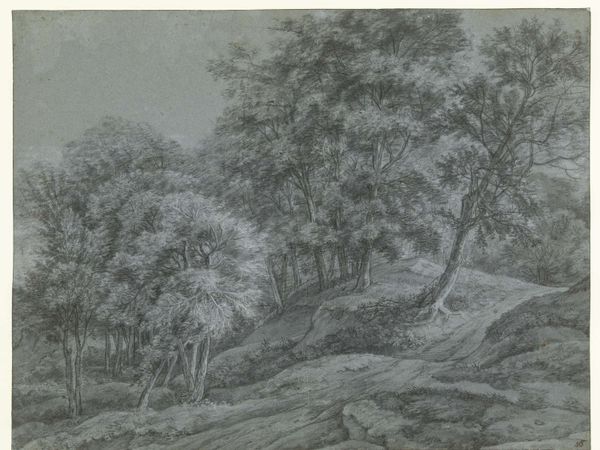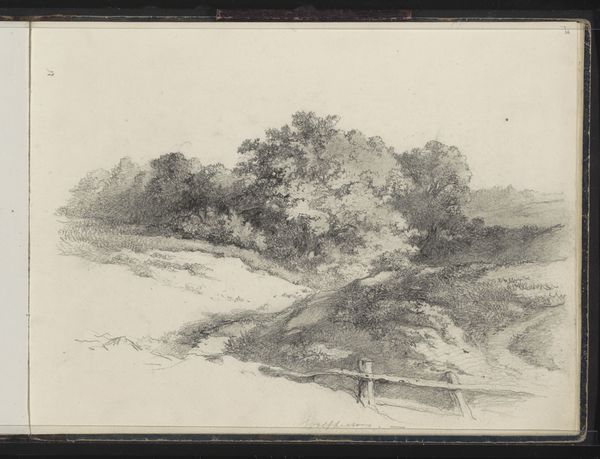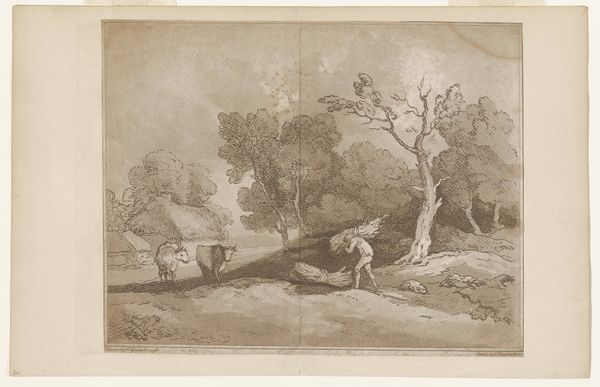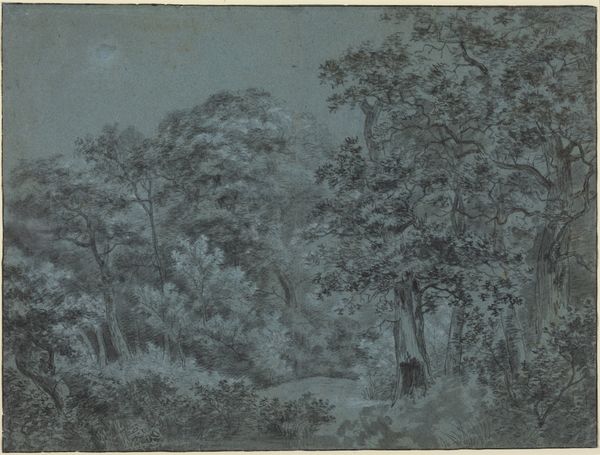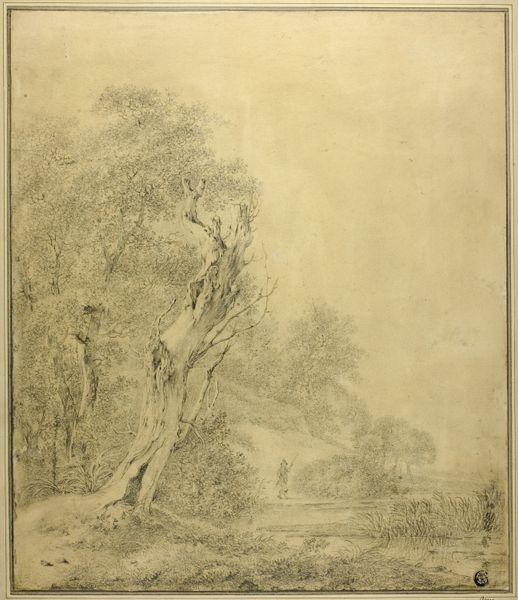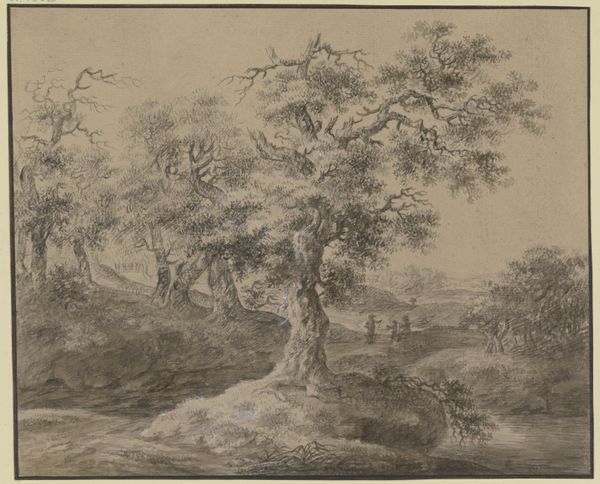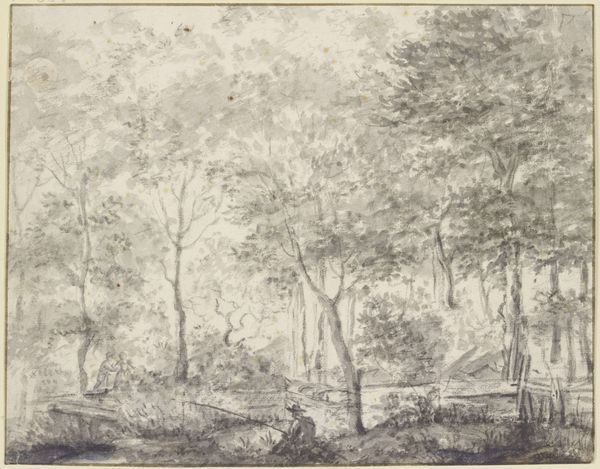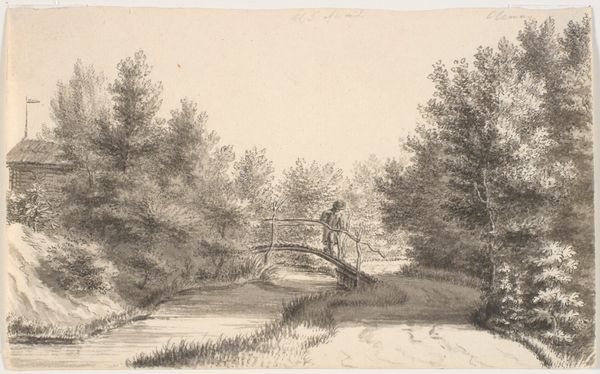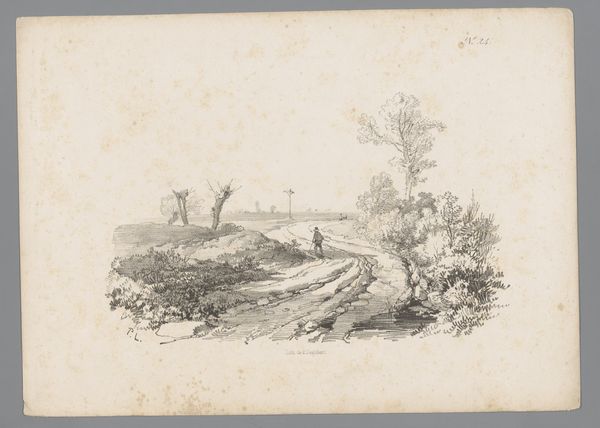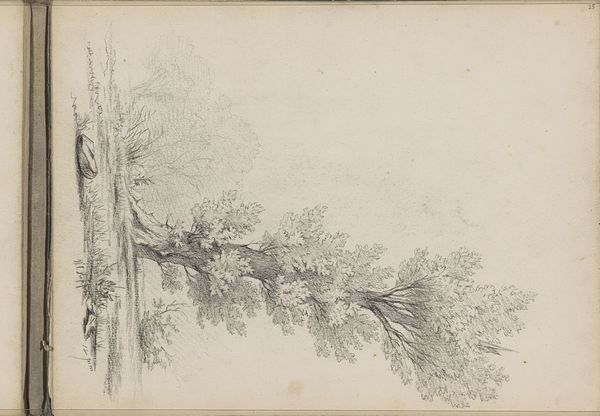
Bergabhang mit Bäumen, ein großer Ast ist an einer Eiche abgebrochen
0:00
0:00
drawing, ink, pencil, chalk, graphite
#
pencil drawn
#
drawing
#
baroque
#
landscape
#
ink
#
pencil drawing
#
pencil
#
chalk
#
graphite
Copyright: Public Domain
Curator: Here we have "Bergabhang mit Bäumen, ein grosser Ast ist an einer Eiche abgebrochen", which translates to "Mountainside with trees, a large branch is broken off an oak tree", a drawing held at the Städel Museum, rendered by Herman van Swanevelt. Editor: It's remarkably somber. The monochromatic palette and the stark image of the broken branch evoke a sense of loss and fragility. Curator: Consider that this work is composed using pencil, chalk, graphite and ink on paper. The interplay of these accessible materials really softens the final effect. These are tools readily available, suggesting a direct connection to the land itself. I would propose we reflect on the labor involved, each stroke building upon another, transforming simple matter into art. Editor: And that broken branch speaks volumes. The oak, a symbol of strength and longevity, has suffered a visible wound. This echoes themes of mortality and the transience of nature, something often explored in Baroque art. It could reflect societal anxieties. Curator: Interesting point about the wounded tree as a symbol of mortality. Could this also be a simple recording of forestry and the resources available? Baroque landscapes are more complex, they reflect land use, and resource management. Editor: Perhaps it is both. Symbols are rarely singular in meaning. The act of depicting it highlights a relationship, doesn’t it? We see the broken limb as both a practical detail and a potent emblem, informing its interpretation and cultural impact. What would compel the artist to render that? Curator: I think the value, ultimately, comes from looking at art like this closely. We tease apart all its components and contextual meanings, that brings a great perspective on the artmaking, even centuries after it's completed. Editor: Yes, allowing these artworks to continue resonating with our world.
Comments
No comments
Be the first to comment and join the conversation on the ultimate creative platform.
